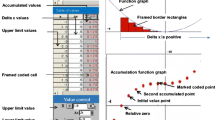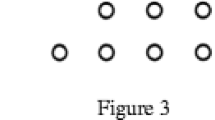Abstract
This paper substantiates the notion of inclusive materialism by illustrating the role of signs and micro-perception in the learning process of multiplication. Inclusive materialism, offered by de Freitas and Sinclair, considers mathematical learning a process of becoming a learning assemblage, which embodies various materials in a Deleuzian sense. Drawing on the Deleuzian notions of the sign, micro-perception, and assemblage, we analyze a classroom dynamic in which students are involved in the actualization of the concept of multiplication. The analysis shows that the scale of micro-perception modifies the material condition and leads learners to be extricated from the previous signification and previous approaches. Through gesturing and diagramming activities, the learners’ perception was structured and new habits of handling multiplicative situations were embodied. Ultimately, this paper evidences that by drawing on key ideas from Deleuze, inclusive materialism provides a new framework for theorizing the relations between materials, perception, and learning.





Similar content being viewed by others
Notes
In this respect, a Deleuzian perspective about learning differs from a Piagetian perspective. Piaget sees that structure is the result of organizing activity of a self-sufficient mind, and assumes a constant perception (Roth, 2011). A Deleuzian perspective explains the transformation of perception that occurs as the human body encounters with various materials, and notes the learning process by the power of materials.
References
Battista, M. T., & Clements, D. H. (1996). Students’ understanding of three-dimensional rectangular arrays of cubes. Journal for Research in Mathematics Education, 27(3), 258–292.
Battista, M. T., Clements, D. H., Arnoff, J., Battista, K., & Borrow, C. V. (1998). Students’ spatial structuring of 2D arrays of squares. Journal for Research in Mathematics Education, 29(5), 503–532.
Bennett, J. (2010). Vibrant matter: A political ecology of things. Durham, NC: Duke University Press.
de Freitas, E. (2016). Material encounters and media events: What kind of mathematics can a body do? Educational Studies in Mathematics, 91(2), 185–202.
de Freitas, E., Ferrara, F., & Ferrari, G. (2019). The coordinated movements of collaborative mathematical tasks: The role of affect in transindividual sympathy. ZDM Mathematics Education, 51, 305–318.
de Freitas, E., & Sinclair, N. (2012). Diagram, gesture, agency: Theorizing embodiment in the mathematics classroom. Educational Studies in Mathematics, 80(1–2), 133–152.
de Freitas, E., & Sinclair, N. (2014). Mathematics and the body: Material entanglement in the classroom. Cambridge, UK: Cambridge University Press.
de Freitas, E., & Sinclair, N. (2017). Concepts as generative devices. In E. de Freitas, N. Sinclair, & A. Coles (Eds.), What is a mathematical concept? (pp. 76–89). New York, NY: Cambridge University Press.
Delanda, M. (2006). A new philosophy of society: Assemblage theory and social complexity. London & New York: Continuum.
Deleuze, G. (1993/1988). The fold: Leibniz and the baroque (T. Conley, Trans.). London, UK: The Athlone Press.
Deleuze, G. (1994/1968). Difference and repetition (P. Patton, Trans.). New York, NY: Columbia University Press.
Deleuze, G. (2000/1964). Proust and signs (R. Howard, Trans.). London, UK: Athlone Press.
Deleuze, G., & Guattari, F. (1987/1980). A thousand plateaus: Capitalism and schizophrenia (B. Massumi, Trans.). Minneapolis, MN: University of Minnesota Press.
Downton, A., & Sullivan, P. (2017). Posing complex problems requiring multiplicative thinking prompts students to use sophisticated strategies and build mathematical connections. Educational Studies in Mathematics, 95(3), 303–328.
Ferrara, F., & Ferrari, G. (2017). Agency and assemblage in pattern generalisation: A materialist approach to learning. Educational Studies in Mathematics, 94(1), 21–36.
Hoopes, J. (Ed.). (1991). Peirce on signs: Writings on semiotics by Charles Sanders Peirce. Chapel Hill, NC: The University of North Carolina Press.
Hultman, K., & Lenz-Taguchi, H. (2010). Challenging anthropocentric analysis of visual data: A relational materialist methodological approach to educational research. International Journal of Qualitative Studies in Education, 23, 525–542.
Leibniz, G. W. (1996/1765). New essays on human understanding (P. Remnant & J. Bennett, Trans.). Cambridge, UK: Cambridge University Press.
Lobato, J., Hohensee, C., & Rhodehamel, B. (2013). Students’ mathematical noticing. Journal for Research in Mathematics Education, 44(5), 809–850.
Mason, J., Stephens, M., & Watson, A. (2009). Appreciating mathematical structure for all. Mathematics Education Research Journal, 21(2), 10–32.
Mazzei, L. (2013). A voice without organs: Interviewing in posthumanist research. International Journal of Qualitative Studies in Education, 26(6), 732–740.
Mulligan, J., & Mitchelmore, M. (1997). Young children’s intuitive models of multiplication and division. Journal for Research in Mathematics Education, 28(3), 309–330.
Mulligan, J., & Watson, J. (1998). A developmental multimodal model for multiplication and division. Mathematics Education Research Journal, 10(2), 61–86.
Palatnik, A., & Abrahamson, D. (2018). Rhythmic movement as a tacit enactment goal mobilizing the emergence of mathematical structures. Educational Studies in Mathematics, 99, 293–309.
Protevi, J. (2009). Political affect: Connecting the social and the somatic. Minneapolis, MN: University of Minnesota Press.
Radford, L. (2008). Diagrammatic thinking: Notes on Peirce’s semiotics and epistemology. PNA, 3(1), 1–18.
Radford, L. (2010). The eye as a theoretician: Seeing structures in generalizing activities. For the Learning of Mathematics, 30(2), 2–7.
Radford, L., & Roth, W.-M. (2011). Intercorporeality and ethical commitment: An activity perspective on classroom interaction. Educational Studies in Mathematics, 77(2–3), 227–245.
Radford, L., Schubring, G., & Seeger, F. (2011). Signifying and meaning-making in mathematical thinking, teaching, and learning. Educational Studies in Mathematics, 77, 149–156.
Roth, W.-M. (2011). Passibility: At the limits of the constructivist metaphor. New York, NY: Springer.
Sinclair, N., & de Freitas, E. (2014). The haptic nature of gesture: Rethinking gesture with multitouch digital technologies. Gesture, 14(3), 351–374.
Singh, P. (2000). Understanding the concept of proportion and ratio constructed by two grade six students. Educational Studies in Mathematics, 14(3), 271–292.
Steffe, L. P. (1994). Children’s multiplying schemes. In G. Harel & J. Confrey (Eds.), The development of multiplicative reasoning in the learning of mathematics (pp. 3–40). Albany, NY: State University of New York Press.
Acknowledgments
We appreciate the participants of this paper for their help. We also appreciate the editor and anonymous reviewers for their kind suggestions.
Code availability
Not applicable.
Availability of data and material
Not applicable.
Funding
The present study was supported by the Baegot-newcity specialized town Co., Ltd.
Author information
Authors and Affiliations
Contributions
This manuscript has not been published before in any form or language, and all authors contributed to the study.
Corresponding author
Ethics declarations
Informed consent has been obtained for research purpose and we have no conflict of interest.
Conflict of interest
The authors declare that they have no conflict of interest.
Consent to participate
Informed consent has been obtained from all parents of individual participants included in the study for research purpose.
Consent for publication
All parents of individual participants gave their assent to publication.
Ethics approval
Not applicable.
Additional information
Publisher’s note
Springer Nature remains neutral with regard to jurisdictional claims in published maps and institutional affiliations.
Rights and permissions
About this article
Cite this article
Moon, SJ., Lee, KH. Deleuzian actualizations of the multiplicative concept: a study of perceptual flow and the transformation of learning assemblages. Educ Stud Math 104, 221–237 (2020). https://doi.org/10.1007/s10649-020-09953-4
Published:
Issue Date:
DOI: https://doi.org/10.1007/s10649-020-09953-4




